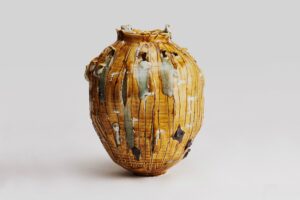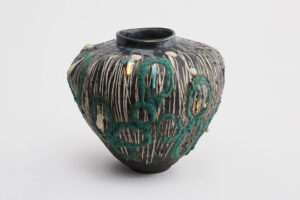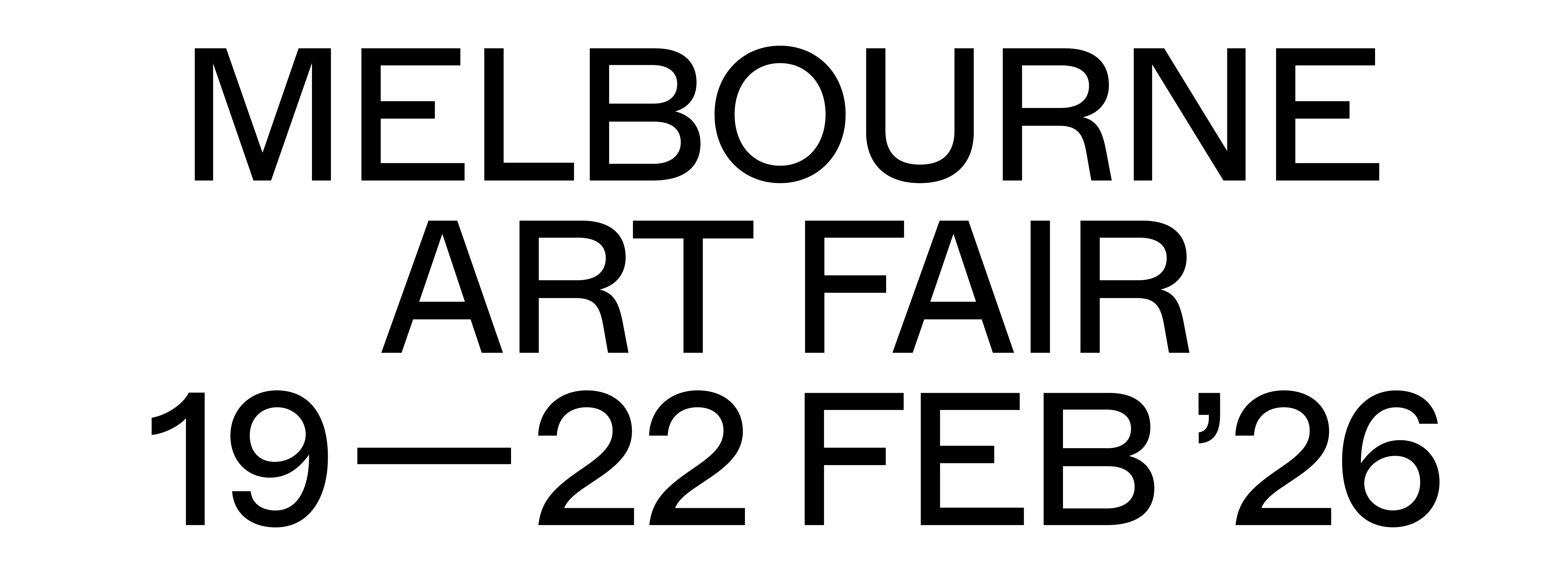Jane Yang D’Haene on Embracing Chance and Transformation Within Her Ceramic Works
Presenting a dual show of new works by Jane Yang D’Haene and Puuni Brown Nungarrayi, COMA Gallery (Gadigal Country/Sydney) returns to Melbourne Art Fair. D’Haene’s stoneware is profoundly influenced by her Korean heritage, particularly traditional ceramic forms such as the dal hang-ari (Moon Jar), an iconic symbol of Korean culture. Jane speaks with Melbourne Art Fair about her transformative practice, incorporating both traditional and contemporary techniques.
When were you first introduced to ceramics?
In 2017, my journey into the world of ceramics began, sparked by a thoughtful recommendation from my girlfriend. She intuitively sensed that ceramics would be the perfect medium for me, capturing my imagination and creativity in ways I had yet to discover. Her insight proved invaluable, as working with ceramics has opened up an entirely new avenue of artistic expression for me. It’s remarkable how someone can see our potential so clearly, even before we recognize it ourselves.
 Jane Yang D’Haene, Untitled, 2024, stoneware, porcelain, glaze, 46 x 34 x 34cm. Courtesy the artist and COMA Gallery (Gadigal Country/Sydney).
Jane Yang D’Haene, Untitled, 2024, stoneware, porcelain, glaze, 46 x 34 x 34cm. Courtesy the artist and COMA Gallery (Gadigal Country/Sydney).
Can you expand on your experimental take on the traditional Korean ceramic forms of dal hang-ari (moon jars)? Where does your interest in moon jars stem from and how does your process both pay homage to and depart from the traditional?
My experimental approach to the traditional Korean ceramic forms, particularly the dal hang-ari or moon jars, is deeply rooted in a desire to honour and reinterpret cultural heritage. The moon jar, with its serene and understated beauty, symbolises both the simplicity and complexity of Korean ceramic traditions. My interest in these forms stems from their historical significance and their ability to transcend time with their pure, spherical elegance. In my work, I aim to pay homage to the traditional essence of moon jars through meticulous attention to form and proportion. However, I also strive to push the boundaries by incorporating contemporary techniques and aesthetics. This involves a bold experimentation with colours, textures, and glazing methods, which allows me to infuse modern sensibilities into these age-old forms. The process becomes a dialogue between the past and present, where each piece reflects a synthesis of tradition and innovation. By doing so, I not only preserve the cultural legacy of moon jars but also breathe new life into them, inviting viewers to engage with these timeless forms in fresh and unexpected ways. This journey is not just about creating art but also about forging a connection between history and modernity.
You have previously spoken about your work as transforming emotional experiences of memory into physical forms. Can you expand on how this idea is communicated through your work?
At the heart of my artistic journey is the transformation of emotional experiences and memories into tangible forms, particularly the complex narratives of the human body as it evolves through illness, age, and womanhood. Each ceramic piece becomes a vessel, capturing the nuanced interplay of human emotion and personal history. This transformative process begins with introspection, delving into memories that hold special significance and exploring the emotions they evoke. The process of shaping clay mirrors the shaping of memory and the transformation of our bodies. Layers of glaze and clay represent each memory, whether a fond childhood moment or a difficult recent experience. These layers embody the resilience and beauty of human evolution, capturing the fluidity and strength of form. By embedding my emotional landscape into each piece, I create art that resonates personally, offering a shared space for others to find echoes of their own experiences. My work seeks to transform fleeting moments of memory into enduring expressions of art, bridging the ephemeral and the eternal, and celebrating the ever-changing journey of our bodies and emotions.
 Jane Yang D’Haene, Untitled, 2024, stoneware, porcelain, glaze, 28 x 31 x 31cm. Courtesy the artist and COMA Gallery (Gadigal Country/Sydney).
Jane Yang D’Haene, Untitled, 2024, stoneware, porcelain, glaze, 28 x 31 x 31cm. Courtesy the artist and COMA Gallery (Gadigal Country/Sydney).
What is the significance behind leaving much of the textural formations to chance in your work? Is the final result always unexpected?
Leaving much of the textural formations to chance in my work holds deep significance, as it mirrors the unpredictability and spontaneity of life itself. Embracing chance allows for a genuine expression of the organic and evolving nature of our experiences, much like how life unfolds with unexpected twists and turns. By allowing the clay and glazes to interact freely, I invite the material to speak for itself, creating textures and patterns that are unique to each piece. This element of unpredictability ensures that each work is a one-of-a-kind creation, reflecting the individuality and complexity of personal memories and emotions. The final result is often unexpected, and this element of surprise is integral to my artistic process. It encourages me to let go of control, embracing imperfections and serendipity as part of the creative journey. This openness to chance not only adds depth and character to my work but also resonates with viewers, inviting them to find beauty in the unexpected and to reflect on the serendipity within their own lives.
What can we expect to see from your presentation with COMA at Melbourne Art Fair?
At my presentation with COMA at the Melbourne Art Fair, you can expect a collection that delves into the themes of transformation and memory, with a focus on the narratives of the human body through illness, age, and womanhood. Each piece serves as a vessel to capture the emotional and physical evolution that defines our lives. The collection features ceramics with rich, layered textures and vibrant glazes, each telling its own unique story. The interplay of chance and intention is evident, as I embrace the unpredictable nature of the materials to create dynamic and intricate works. At the end of the day, whether transformed or unchanged, we remain who we are—beautiful in our uniqueness and resilience. This presentation is a celebration of that inherent beauty, embracing the imperfections and changes that life brings. Each piece at the fair honors the journey of self-discovery and acceptance, reminding us that our true essence shines through, regardless of the transformations we undergo. It invites viewers to engage with art that resonates on a personal level, encouraging reflection on their own experiences of change and growth, and celebrating the beauty and complexity of life’s journey.
Melbourne Art Fair, 20 – 23 February at MCEC. Click here to secure tickets.


